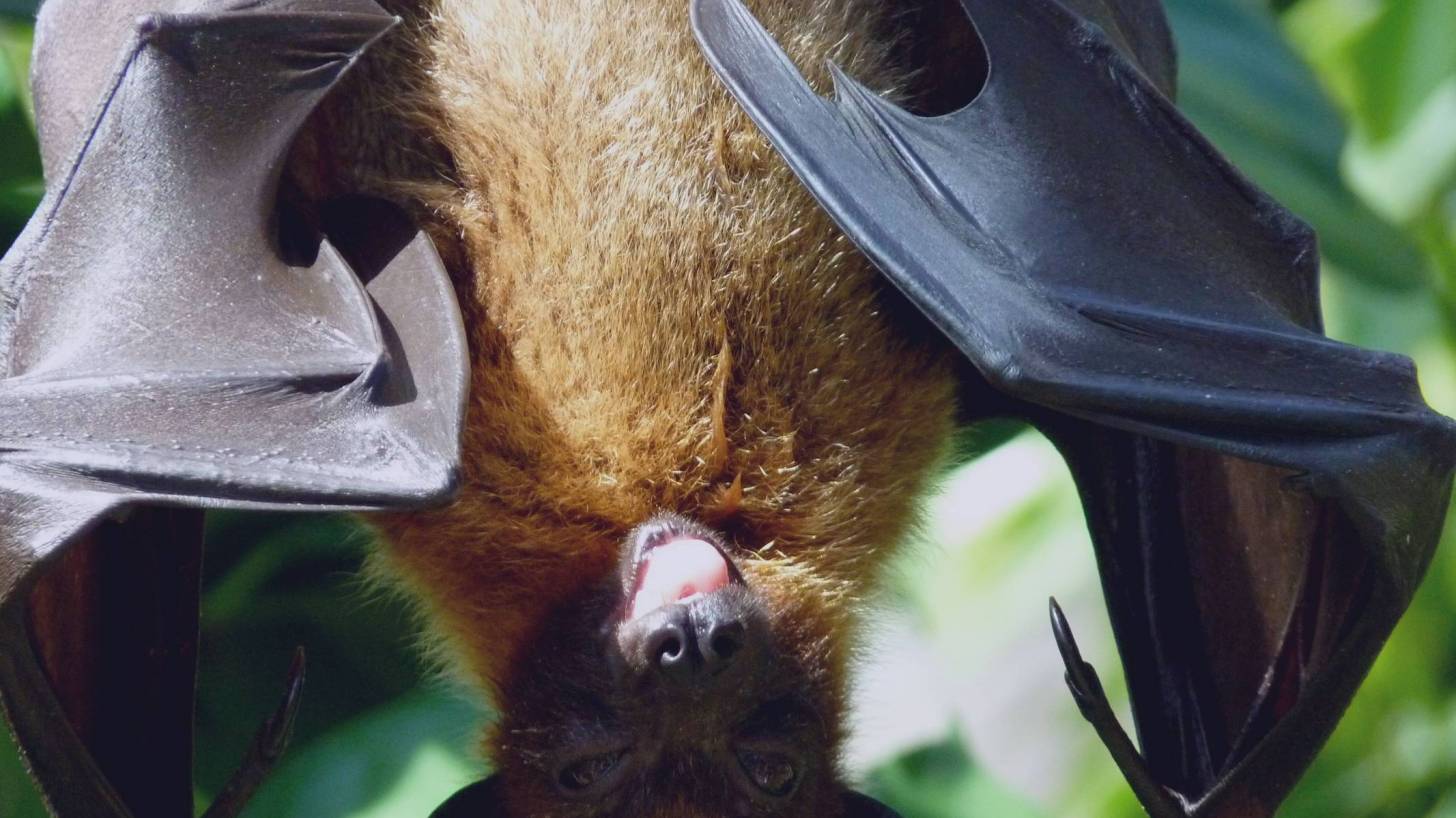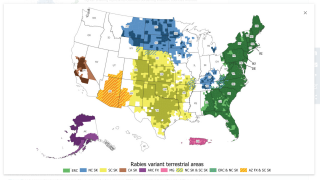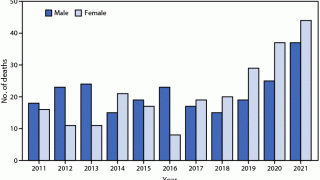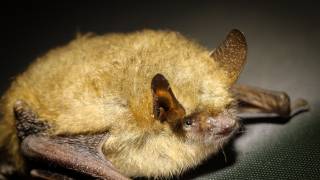Bats Not Dogs Pose Greatest Rabies Risk in the USA

Bats are responsible for about 70 percent of rabies deaths among people who are infected with the rabies virus in the USA, reports the Centers for Disease Control and Prevention (CDC).
The large percentage of deaths tied to bats is particularly striking since bats account for 33 percent of rabid animals reported each year in the USA.
But, when traveling abroad, rabid dogs are a leading cause of rabies cases in Americans.
Before 1960, bites from rabid dogs caused most human rabies cases in the USA. This decline can be traced to pet-vaccination programs and leash laws enacted in the 1950s.
As an example, the state of Texas Oral Rabies Vaccination Program has dropped packets of the oral rabies vaccine over wild areas to vaccinate wildlife for 25 years.
“Reducing rabies in dogs is a remarkable achievement of the public health system, but with this deadly disease still present in thousands of wild animals. It’s important that Americans are aware of the risk,” said CDC Director Robert R. Redfield, M.D., in a CDC statement on June 12, 2019.
The CDC says 23 human cases of rabies have been reported in the USA between 2008-2017. Eight of these cases were contracted outside of the U.S. and its territories.
This decrease is largely due to routine pet vaccination and the availability of post-exposure prophylaxis (PEP), which combines the rabies vaccine and rabies immune globulin, to prevent infection after exposure to the virus.
Rabies is nearly always fatal if people don’t get rabies PEP before symptoms start.
Each year, about 55,000 people in the USA seek PEP services after potential rabies exposure.
Staying away from bats is key to preventing rabies in people. Bats carry rabies virus in every U.S. state except Hawaii.
However, anecdotal case reports suggest that people may not be fully aware that bats pose a rabies risk – and so they may not seek life-saving rabies PEP if they are bitten or scratched by a bat.
“It is important people know that most bats are not rabid,” said Emily Pieracci, D.V.M., a CDC veterinarian and lead author of the Vital Signs.
“The problem comes when people try to handle bats they think are healthy because you really can’t tell if an animal has rabies just by looking at it.”
Americans who travel internationally should research the rabies risk at their destination, especially the risk from dogs, which still carry rabies in many countries around the world.
Globally, rabid dogs cause about 98 percent of the 59,000 human deaths from rabies each year.
CDC recommends travelers avoid animals, have a plan to get care if they are scratched or bitten, and have travel health insurance to pay for treatment should they need it.
Some travelers may also want to consider pre-exposure vaccination depending on their specific travel plans. More information is available on the CDC’s Travel Health website.
Additionally, imported dogs pose a risk as well.
The CDC estimates more than 1 million dogs enter the U.S. annually, and 107,000 are imported from countries where rabies in dogs is common.
Recent rabies news:
- 6 Rabid Raccoons Identified in NYC
- Texas Air-Drops 1 Million Rabies Vaccine Packets
- 1 To 2 Shot Rabies Vaccine Candidate Launches Clinical Study
The CDC says rabies is just one ‘zoonotic diseases’ to worry about.
About 60 percent of infectious diseases in people are zoonotic, which makes it crucial that the nation strengthen its capabilities to prevent and respond to these diseases.
The CDC’s ‘One Health’ approach recognizes the connection between people, animals, plants, and their shared environment and calls for experts in human, animal, and environmental health to work together to achieve the best health outcomes for all.
This innovative report is a new resource for organizations that work on One Health issues. The One Health Zoonotic Disease Prioritization report is available here.
There are 2 vaccines approved in the USA, both contain inactivated rabies virus, and are considered as equally safe and effective:
- HDCV vaccine (Imovax) is produced in human diploid cell culture.
- PCECV vaccine (RabAvert) is produced in chick embryo cell culture.
The CDC says the estimated public health expenditures on rabies disease diagnostics, prevention, and control in the USA is over $245 million dollars annually.
These costs can be reduced with increased animal awareness and access to PEP treatments, says the CDC.
Our Trust Standards: Medical Advisory Committee

























